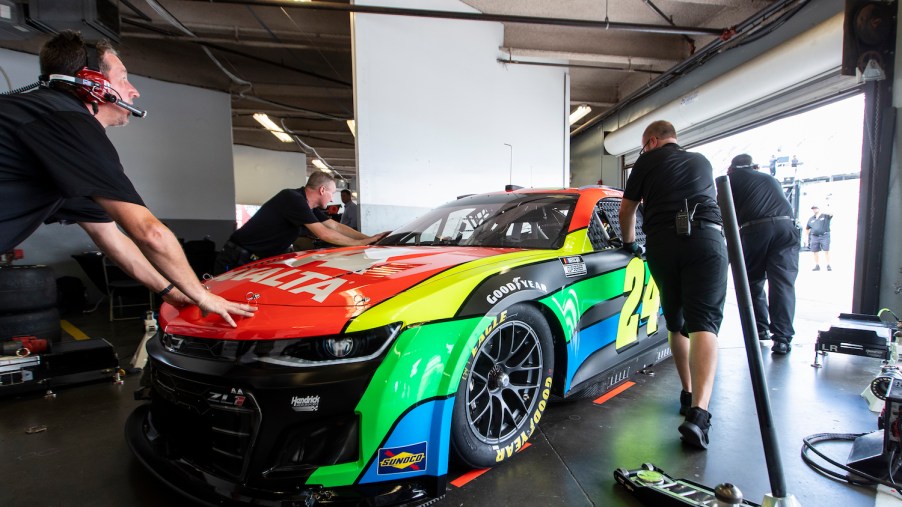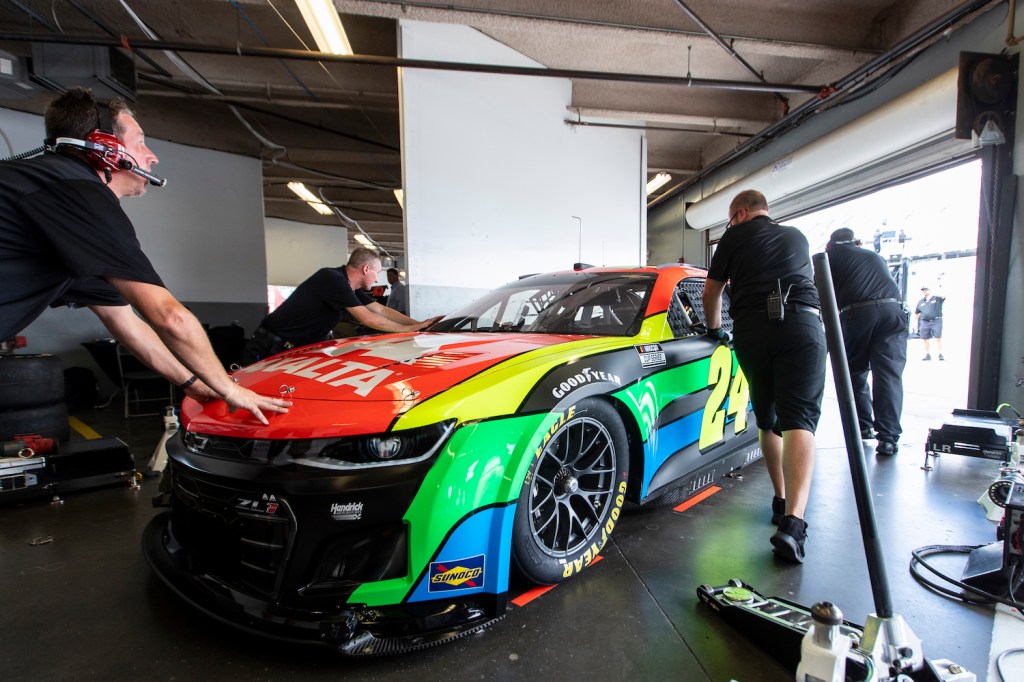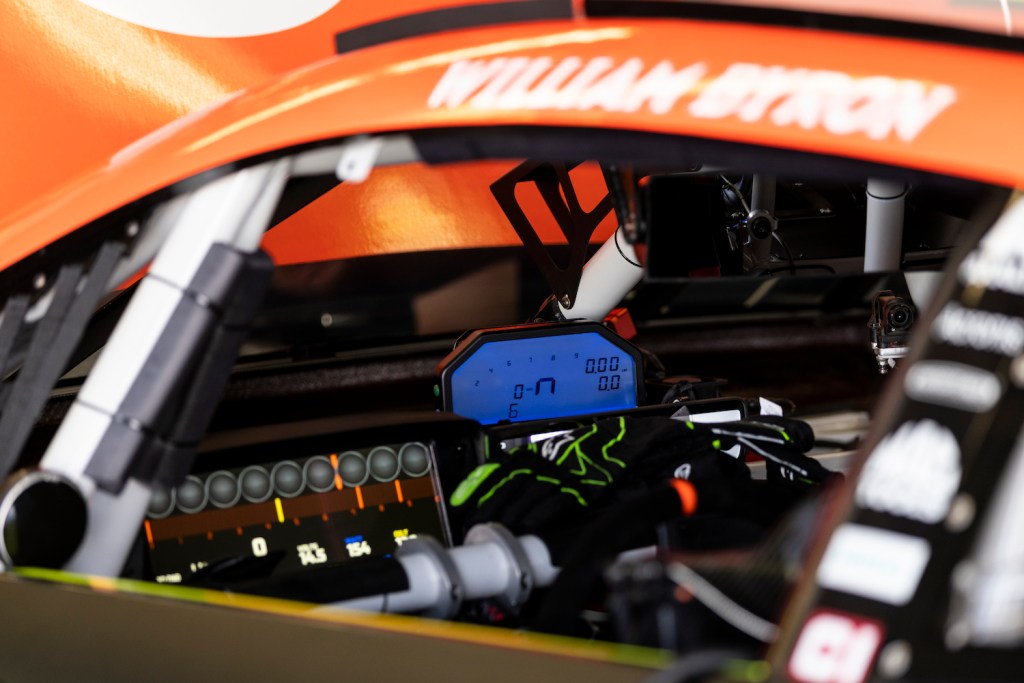
Will NASCAR Next Gen Cars Have Automatic Transmissions?
In early 2021, NASCAR unveiled its Next Gen NASCAR Cup race cars. Fans glimpsed new Camaro, Mustang, and Corolla stock car prototypes. The Association plans to switch over to this seventh-generation car for the 2022 NASCAR Cup season. Fans are wondering about the NASCAR Next Gen transmissions. Gone are the old, H-pattern 4-speed manual transmissions. But they are not being replaced by an automatic.
NASCAR Next Gen transmissions will be packaged in a transaxle

Transmission placement will be a significant change for the Next Gen NASCAR Cup racers. All six previous generations of the Cup cars had a manual transmission attached to the rear of the engine, a steel driveshaft, and a solid rear axle.
Next Gen Cup cars will package the rear differential, axle, and transmission into a single unit: the transaxle. This is because rear transaxles reduce the number of components and save weight. They are a time-tested method to balance a sports car’s weight. The last three generations of the Chevrolet Corvette leverage transaxle technology.
Another benefit of a rear transaxle is more room for the driver. In the Next Gen NASCAR cars, the driver will sit closer to the centerline of the vehicle. This moves them further away from an T-bone collision impacts.
This change means that the NASCAR Cup cars’ engines will spin a high-speed driveshaft. That driveshaft will connect directly to the rear transaxle unit. This transaxle will spin a left and right half-shaft, which will drive the rear wheels.
NASCAR Next Gen transmissions will be 3-pedal manuals

NASCAR aims to reduce the overall cost of each Next Gen car and level the playing field. For this reason, one designated manufacturer will assemble each component. The only exception will be the engines and body panels. The Next Gen transaxle supplier will be Xtrac Limited.
Xtrac first began building gearbox internals for NASCAR teams in 2002, then began manufacturing ring and pinion bevel gears for NASCAR differentials. So the supplier is an obvious choice to produce the new transaxles. Xtrac has engineered an all-new Next Gen transmission named the P1334.
The P1334 NASCAR Next Gen transmission will be a five-speed transmission. Xtrac specifies that this includes five forward gears and one reverse gear. So these transmissions will have one more forward gear than the outgoing four-speed transmissions. NASCAR has sometimes advertised the five-forward and one-reverse transmission as a six-speed.
The new P1334 will be genuine manual transmission and the car will retain all three pedals. The drivers will need to complete every shift, both upshifts and downshifts. But the interface the drivers use to control their transmission will change drastically.
The P1334 Next Gen transmission will have a sequential shift lever
Xtrac’s new P1334 gearbox is categorized as a manual sequential shift transaxle. This means that drivers will only be able to shift the NASCAR Next Gen transmission up or down by one gear. Some sequential-shift gearboxes are controlled by paddle shifters. But NASCAR opted for a floor-mounted shift lever for the Next Gen cars.
To shift the P1334 up a gear, the driver will likely pull back on the gearshift lever. To downshift, they will push forward on the lever. They can access reverse by lifting the lever to disable the lockout. Sequential shifters are sometimes referred to as “ratchet” shifters and are a common upgrade to classic muscle cars.
The Next Gen cars will still have a clutch pedal. But most NASCAR drivers already complete shifts while driving without using their clutch, matching their next gear to engine rpms instead. Drivers only use the clutch pedal to shift their car into first or reverse.
The team at Xtrac also engineered input drop gears to enable the team to make trackside adjustments. This allows NASCAR to mandate gear ratios to achieve the best racing possible. This flexibility is essential for the NASCAR Cup: courses include traditional ovals, road courses, and the new dirt race at the Bristol Motor Speedway.
The managing director of vehicle systems for NASCAR is an engineer named Brandon Thomas. Thomas has overseen the development of the Next Gen car and thinks the transaxle setup will improve racing. Thomas said the new gearbox “will reduce shift times for the drivers who are bold enough and smooth enough to go after it.”
In addition, the new drivetrain will be 50-60% stiffer. This will result in crisper shifts, better cornering, and more power at the rear wheels. NASCAR’s new sequential-shift manual transaxle is shaping up to be a winner.



